Why are there so few litter baskets? Here’s Why.
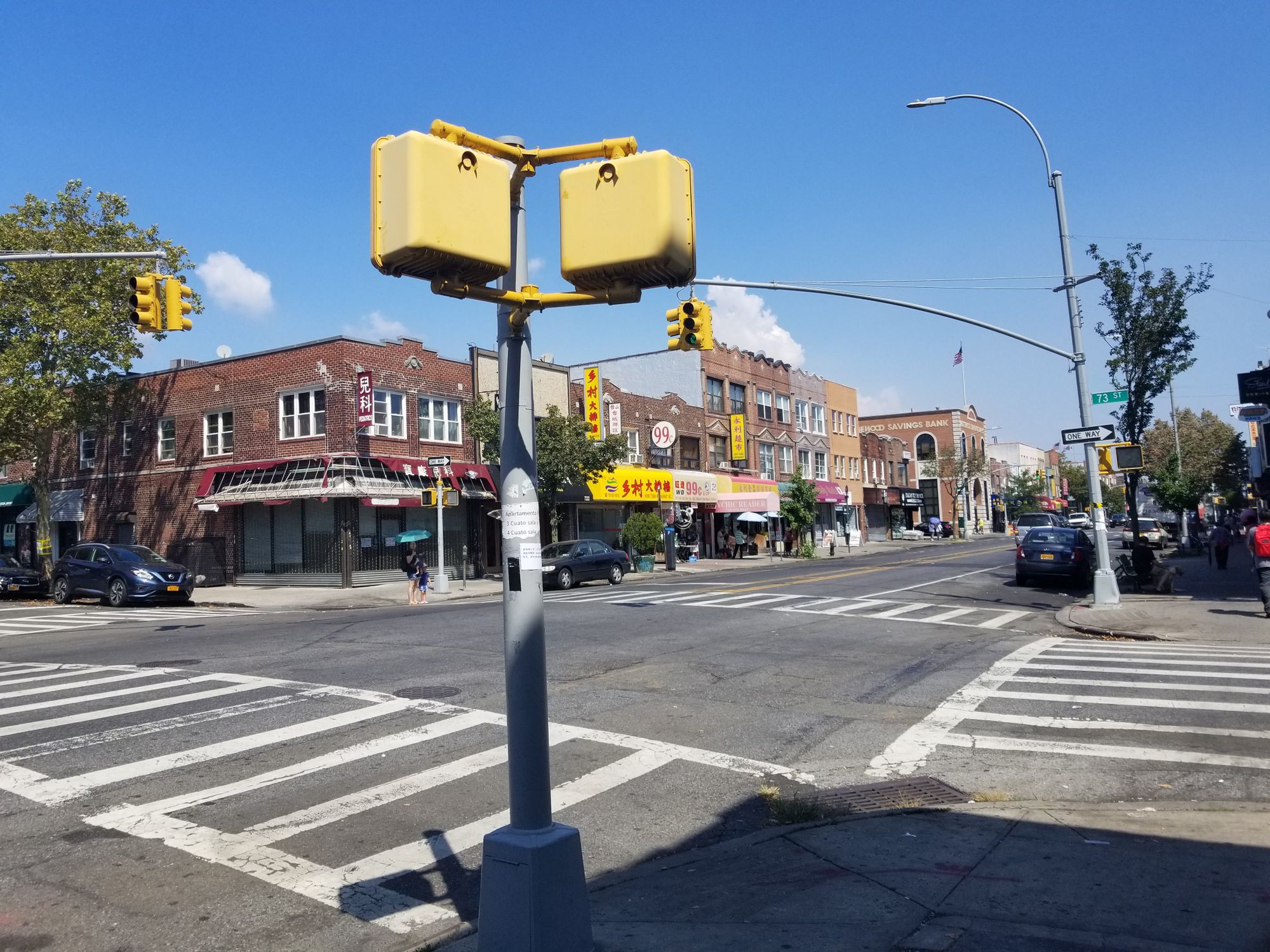
BENSONHURST – You ask, we answer. A neighbor was curious about what happened to make waste baskets disappear along 18th Avenue in Bensonhurst. So we looked into it.
Wastebaskets along 18th Avenue between Bay Ridge Parkway and 65th Street were removed about seven years ago; part of the Department of Sanitation’s approach to litter – no basket, no problem.
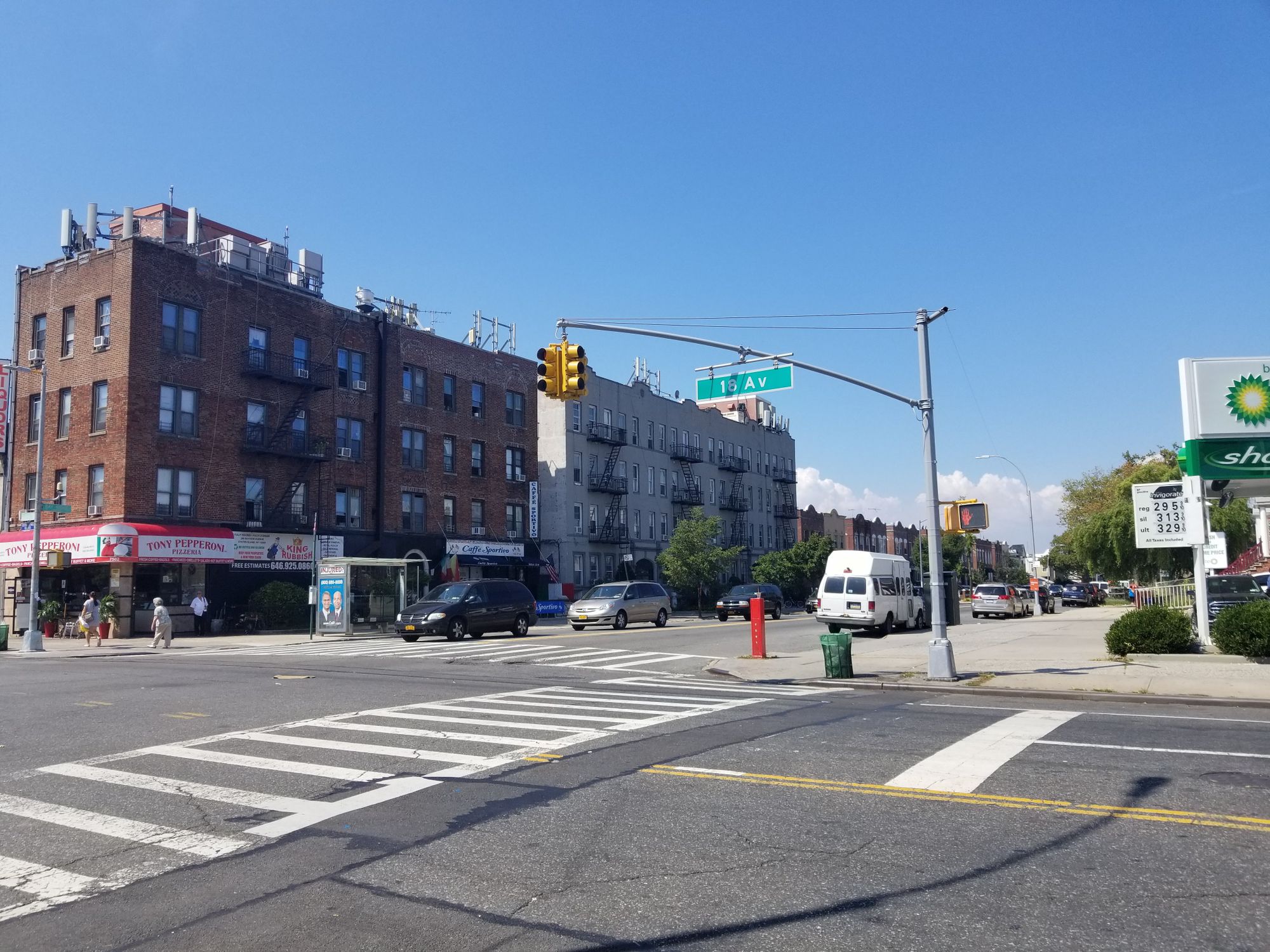
Back in the spring of 2011, trash cans were still being emptied multiple times a day. Then came budget cuts and the frequency of trash pickups diminished. The corner litter baskets started overflowing with garbage, in no small part because some homeowners would throw their home garbage into public trash cans.
Community Board 11 District Manager Marnee Elias-Pavia said the area faced “terrible, dirty conditions,” at the time. As a result of the huge amounts of trash and neighbors complaining, the Department of Sanitation decided to take remove the trash bins from the area to see if there was an improvement. And there was (at the time); people didn’t have a trash bin to throw their home garbage anymore.
“Since that time, the Department of Sanitation would put a basket back if there were community partners who wanted to adopt a litter basket,” Elias-Pavia said. “The Department would supply liners; if they would overflow, the person who adopted it would change the bag.”
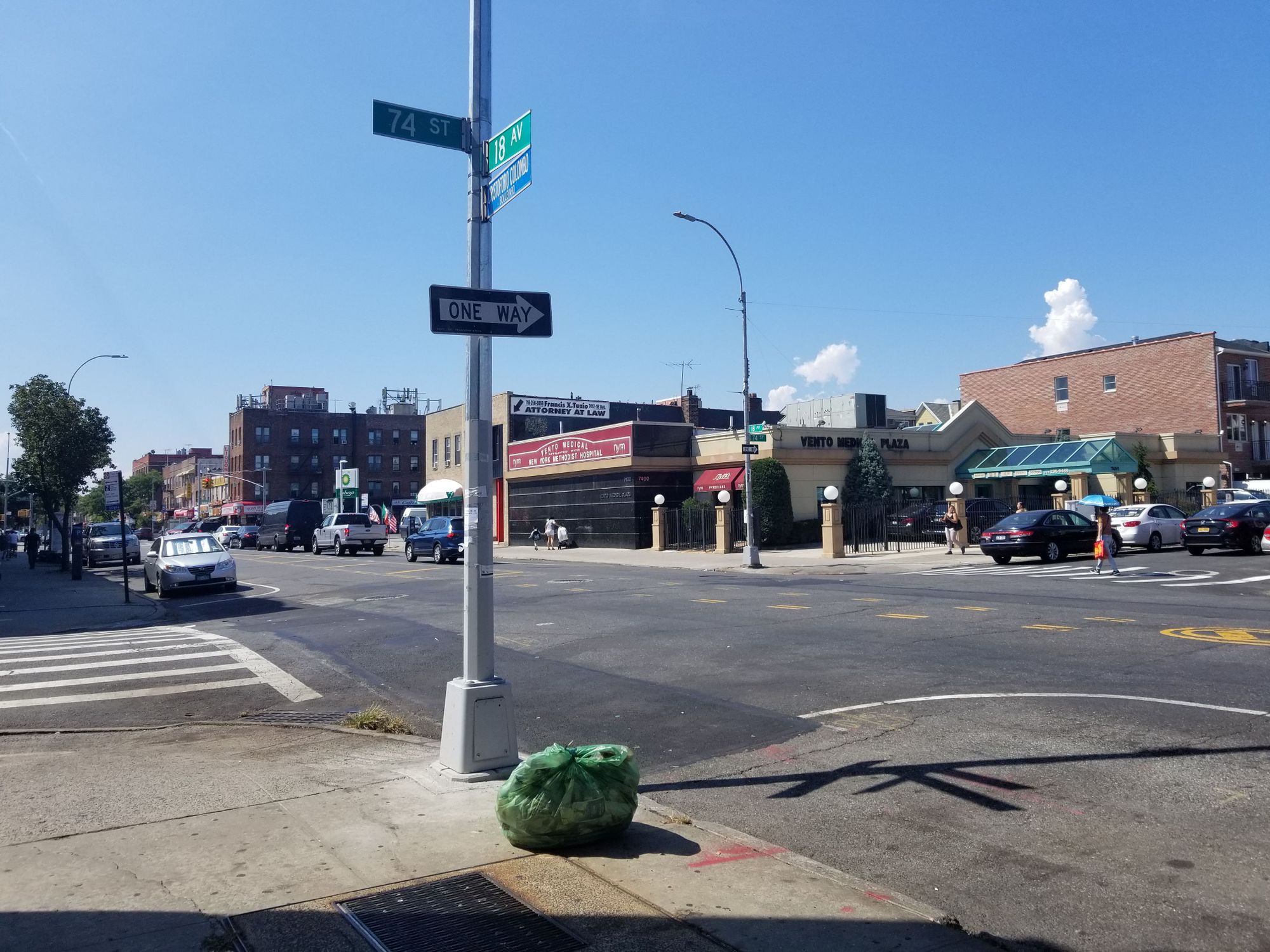
It seems to be a rather common practice to remove the baskets that residents complain about being overfilled, rather than empty them on a more regular basis. We are only left to assume that folks residing north of 65th street and further in Boro Park, and south of Bay Ridge Parkway have not been complaining, as the wastebaskets are all there.
On August 18th the NY Times reported that since the past year, “1,131 litter baskets have vanished from city street corners or about 5 percent of the 23,250 litter baskets dispersed in commercial and heavily used pedestrian corridors.”
In Harlem, where over 200 trash bins have been removed since last year, the Times reported that neighbors “point out that trash continues to be tossed where the baskets used to be — only in unsightly heaps on the ground that embarrass residents, drive away customers and tourists and draw roaches and rats. In a further insult, they say, people have even been fined for trash that piles up outside their homes or businesses.”
Elias-Pavia echoed the sentiment and said “the litter [in this area] is not more significant than litter in areas that do have litter baskets. People end up throwing litter on the floor.” Though she also noted that there haven’t been any recent complaints about the lack of trash cans in the area.
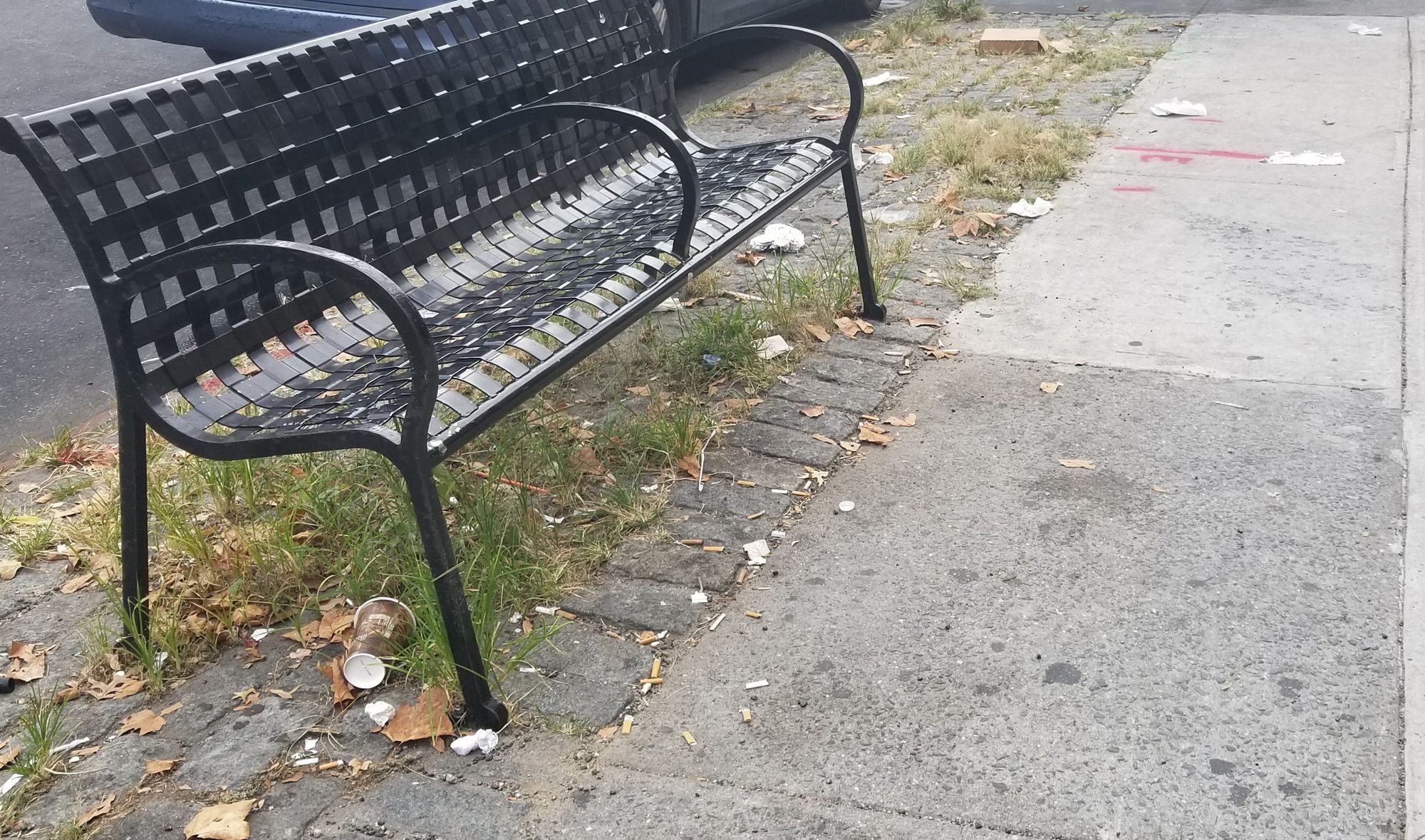
Neighbors in Ditmas Park have been complaining about the sorry state of litter blowing everywhere along Cortelyou Road and Newkirk Plaza all year, to no effect.
This is the case also along Coney Island and Foster Avenues as well, where there are almost no public wastebaskets.
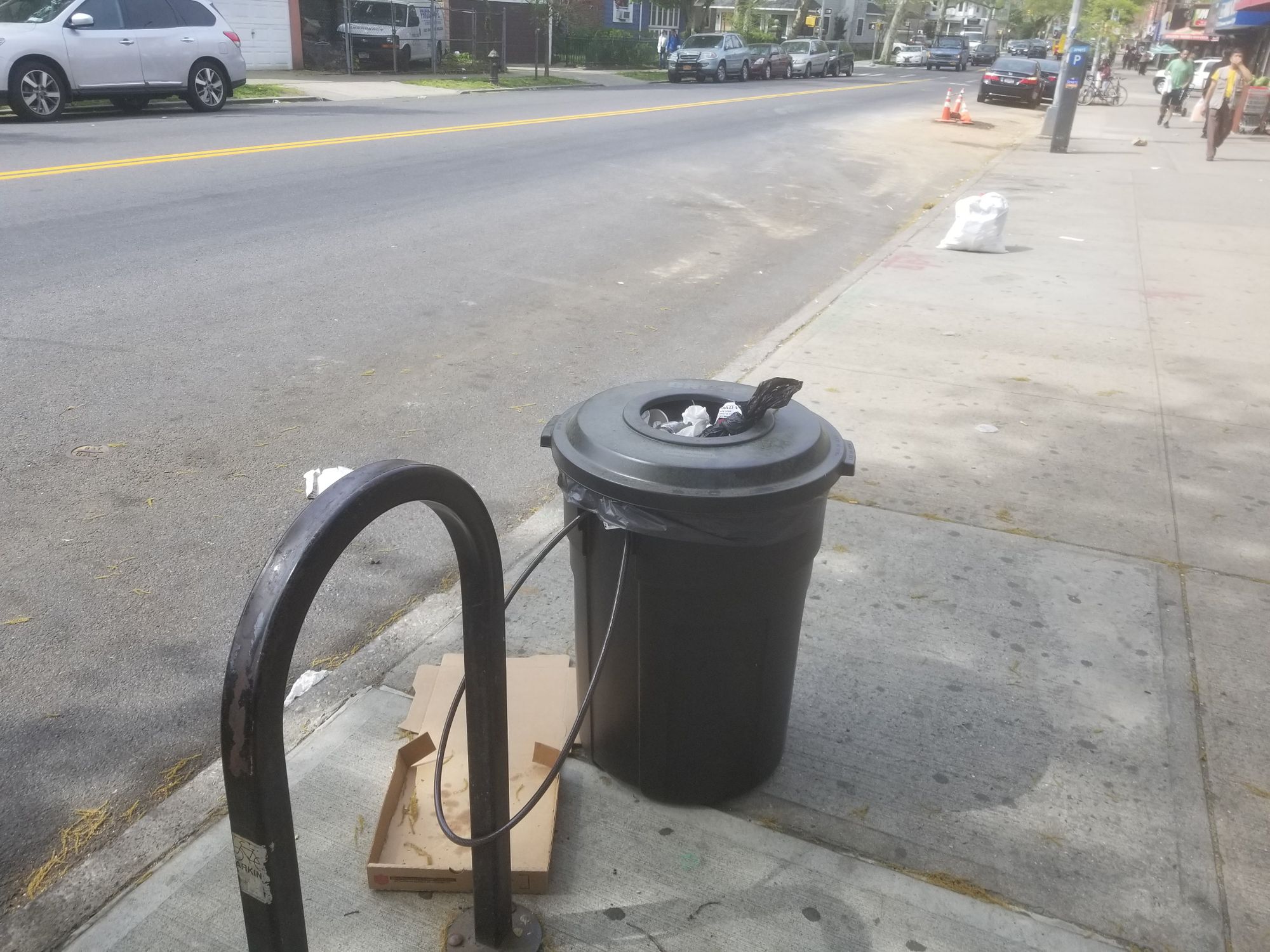
Some more enterprising neighbors on Foster Avenue have taken the matters into their own hands, but is this really how we should be dealing with our trash? Council member Mark Treyger does not think so:
“Clean commercial corridors are critical for our community, and they benefit both businesses and consumers. That’s why, through the City Council’s Cleanup NYC Initiative, I have worked to continually invest more and more funding every year into cleaning services along these community hubs, including 18th Avenue, and recently worked to secure 7-day-a-week trash pick-up service.
“There absolutely should be more waste receptacles throughout our neighborhoods, it’s just common sense. If we want to keep our streets clean, we must ensure that New Yorkers have a place to dispose of their garbage. But we’re all in this together, and everyone in the community needs to do their part to respect waste receptacle regulations by not dumping household garbage, so we can avoid unsightly mounds of waste that are hazardous to our health and damage the aesthetic quality of our commercial corridors.”
We reached out the Department of Sanitation a number of times but did not hear back.




